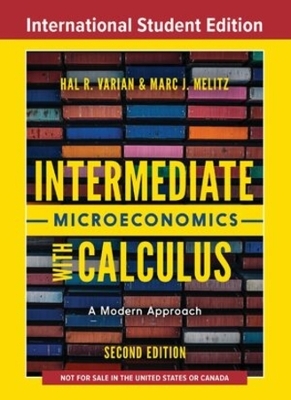
Fundamentals of Differential Equations, Global Edition + MyLab Mathematics with Pearson eText (Package)
Pearson Education Limited
978-1-292-24149-4 (ISBN)
An introduction to the basic theory and applications of differential equations
Fundamentals of Differential Equations presents the basic theory of differential equations and offers a variety of modern applications in science and engineering. This flexible text allows instructors to adapt to various course emphases (theory, methodology, applications, and numerical methods) and to use commercially available computer software. For the first time, MyLab (TM) Math is available for this text, providing online homework with immediate feedback, the complete eText, and more.
Note that a longer version of this text, entitled Fundamentals of Differential Equations and Boundary Value Problems, 7th Edition, contains enough material for a two-semester course. This longer text consists of the main text plus three additional chapters (Eigenvalue Problems and Sturm-Liouville Equations; Stability of Autonomous Systems; and Existence and Uniqueness Theory).
MyLab (TM) Math is not included. Students, if MyLab Math is a recommended/mandatory component of the course, please ask your instructor for the correct ISBN. MyLab Math should only be purchased when required by an instructor. Instructors, contact your Pearson representative for more information.
Reach every student by pairing this text with MyLab Math
MyLab (TM) is the teaching and learning platform that empowers you to reach every student. By combining trusted author content with digital tools and a flexible platform, MyLab personalizes the learning experience and improves results for each student.
1. Introduction
1.1 Background
1.2 Solutions and Initial Value Problems
1.3 Direction Fields
1.4 The Approximation Method of Euler
2. First-Order Differential Equations
2.1 Introduction: Motion of a Falling Body
2.2 Separable Equations
2.3 Linear Equations
2.4 Exact Equations
2.5 Special Integrating Factors
2.6 Substitutions and Transformations
3. Mathematical Models and Numerical Methods Involving First Order Equations
3.1 Mathematical Modeling
3.2 Compartmental Analysis
3.3 Heating and Cooling of Buildings
3.4 Newtonian Mechanics
3.5 Electrical Circuits
3.6 Improved Euler's Method
3.7 Higher-Order Numerical Methods: Taylor and Runge-Kutta
4. Linear Second-Order Equations
4.1 Introduction: The Mass-Spring Oscillator
4.2 Homogeneous Linear Equations: The General Solution
4.3 Auxiliary Equations with Complex Roots
4.4 Nonhomogeneous Equations: The Method of Undetermined Coefficients
4.5 The Superposition Principle and Undetermined Coefficients Revisited
4.6 Variation of Parameters
4.7 Variable-Coefficient Equations
4.8 Qualitative Considerations for Variable-Coefficient and Nonlinear Equations
4.9 A Closer Look at Free Mechanical Vibrations
4.10 A Closer Look at Forced Mechanical Vibrations
5. Introduction to Systems and Phase Plane Analysis
5.1 Interconnected Fluid Tanks
5.2 Elimination Method for Systems with Constant Coefficients
5.3 Solving Systems and Higher-Order Equations Numerically
5.4 Introduction to the Phase Plane
5.5 Applications to Biomathematics: Epidemic and Tumor Growth Models
5.6 Coupled Mass-Spring Systems
5.7 Electrical Systems
5.8 Dynamical Systems, Poincaré Maps, and Chaos
6. Theory of Higher-Order Linear Differential Equations
6.1 Basic Theory of Linear Differential Equations
6.2 Homogeneous Linear Equations with Constant Coefficients
6.3 Undetermined Coefficients and the Annihilator Method
6.4 Method of Variation of Parameters
7. Laplace Transforms
7.1 Introduction: A Mixing Problem
7.2 Definition of the Laplace Transform
7.3 Properties of the Laplace Transform
7.4 Inverse Laplace Transform
7.5 Solving Initial Value Problems
7.6 Transforms of Discontinuous Functions
7.7 Transforms of Periodic and Power Functions
7.8 Convolution
7.9 Impulses and the Dirac Delta Function
7.10 Solving Linear Systems with Laplace Transforms
8. Series Solutions of Differential Equations
8.1 Introduction: The Taylor Polynomial Approximation
8.2 Power Series and Analytic Functions
8.3 Power Series Solutions to Linear Differential Equations
8.4 Equations with Analytic Coefficients
8.5 Cauchy-Euler (Equidimensional) Equations
8.6 Method of Frobenius
8.7 Finding a Second Linearly Independent Solution
8.8 Special Functions
9. Matrix Methods for Linear Systems
9.1 Introduction
9.2 Review 1: Linear Algebraic Equations
9.3 Review 2: Matrices and Vectors
9.4 Linear Systems in Normal Form
9.5 Homogeneous Linear Systems with Constant Coefficients
9.6 Complex Eigenvalues
9.7 Nonhomogeneous Linear Systems
9.8 The Matrix Exponential Function
10. Partial Differential Equations
10.1 Introduction: A Model for Heat Flow
10.2 Method of Separation of Variables
10.3 Fourier Series
10.4 Fourier Cosine and Sine Series
10.5 The Heat Equation
10.6 The Wave Equation
| Erscheint lt. Verlag | 20.9.2018 |
|---|---|
| Verlagsort | Harlow |
| Sprache | englisch |
| Maße | 205 x 255 mm |
| Gewicht | 1220 g |
| Themenwelt | Schulbuch / Wörterbuch |
| Mathematik / Informatik ► Mathematik ► Analysis | |
| ISBN-10 | 1-292-24149-7 / 1292241497 |
| ISBN-13 | 978-1-292-24149-4 / 9781292241494 |
| Zustand | Neuware |
| Informationen gemäß Produktsicherheitsverordnung (GPSR) | |
| Haben Sie eine Frage zum Produkt? |
aus dem Bereich


